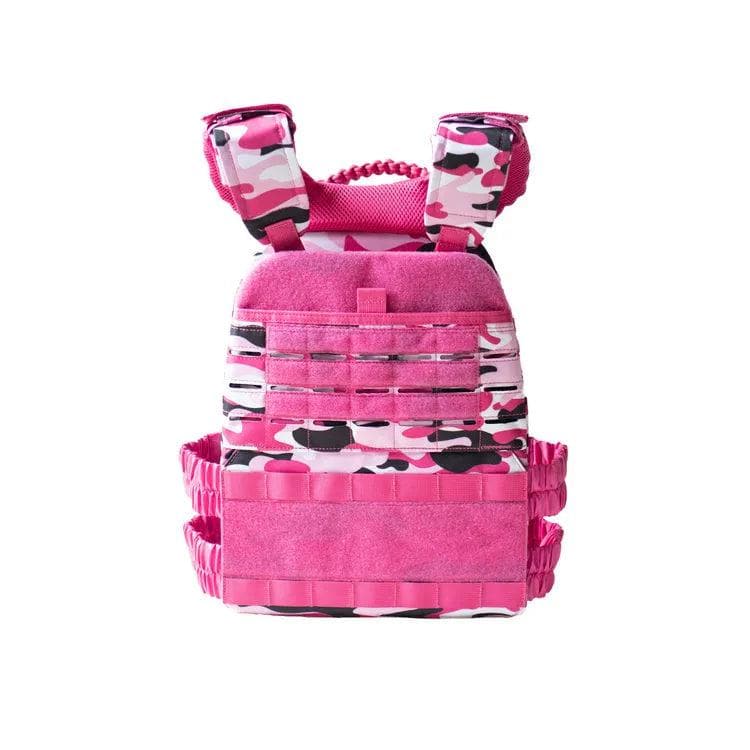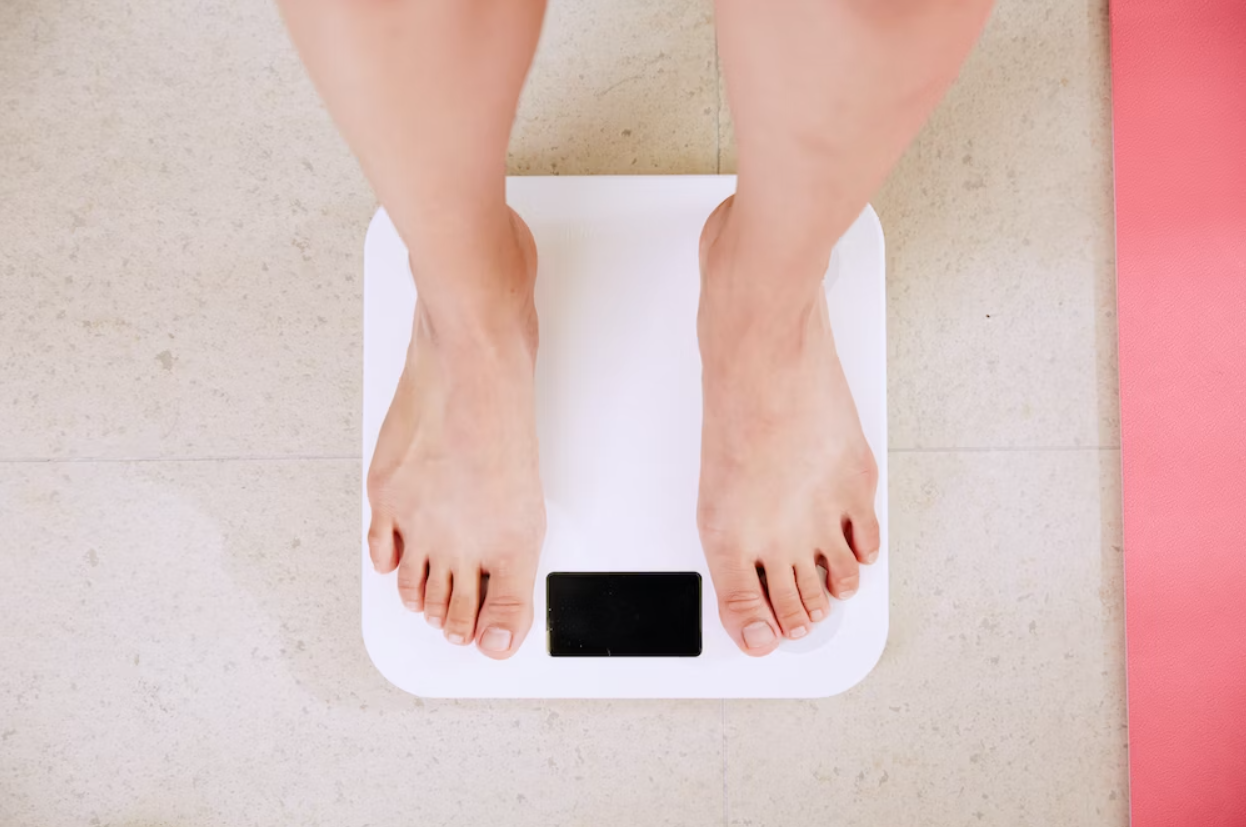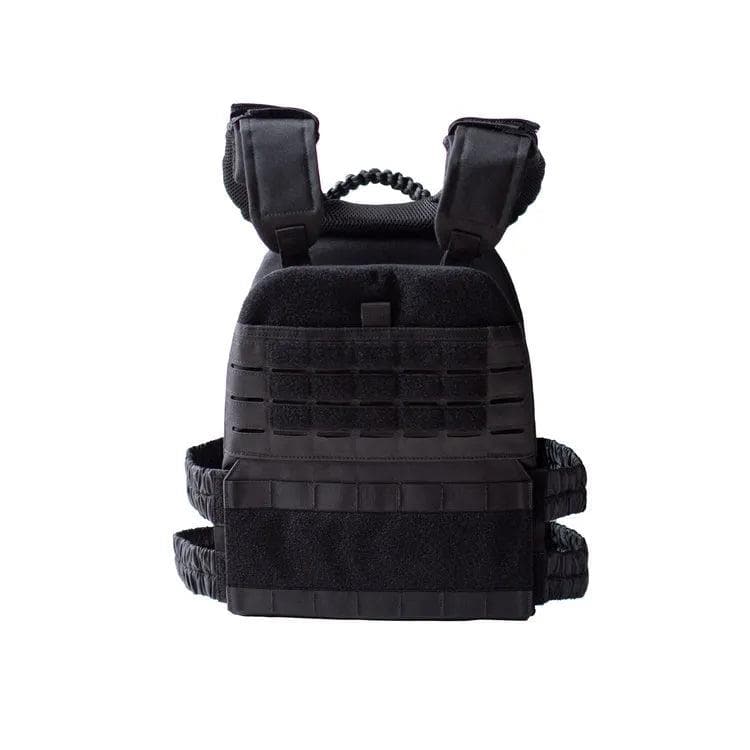Osteoporosis, a condition characterized by weakened bones susceptible to fractures, underscores the importance of maintaining robust bone health. In recent times, innovative approaches to managing osteoporosis have emerged, with weighted vests gaining attention for their potential benefits. This article delves into the role of weighted vests in supporting bone health, exploring their mechanisms, benefits, precautions, and specific exercises tailored for individuals with osteoporosis.
Understanding Osteoporosis

Osteoporosis, often referred to as a "silent disease," silently progresses without apparent symptoms until fractures occur. It results from an imbalance in the bone remodeling process, where the creation of new bone fails to keep pace with the removal of old bone. Fractures in individuals with osteoporosis most commonly occur in the hip, spine, and wrist, leading to significant health implications.
This degenerative process results from an imbalance in the bone remodeling mechanism, where the formation of new bone lags behind the removal of old bone. Fractures, frequently occurring in the hip, spine, and wrist, carry substantial health implications.
The National Osteoporosis Foundation plays a pivotal role in raising awareness about the widespread impact of osteoporosis, a condition that affects millions of individuals globally. By providing comprehensive information and resources, the foundation underscores the urgency of recognizing osteoporosis as a prevalent health concern. The emphasis on awareness serves as a crucial step towards early detection and intervention, helping individuals adopt proactive measures to manage and mitigate the risks associated with this "silent disease."
In their commitment to education and advocacy, the National Osteoporosis Foundation guides individuals in understanding the risk factors, symptoms, and preventive strategies related to osteoporosis. By disseminating evidence-based information, the foundation empowers both healthcare professionals and the general public to take informed actions, fostering a culture of proactive bone health management. As a trusted source, the foundation contributes significantly to the collective effort to address osteoporosis comprehensively, aiming for a future where the silent progression of this condition is met with early awareness and effective preventive measures.
Weighted Vests and Bone Health
Weighted vests, essentially garments with incorporated weights, have gained prominence for their potential in managing osteoporosis. Designed to add resistance during physical activities, these vests stimulate bone density and promote overall bone health.
Weighted vests stand out as innovative tools in the pursuit of managing osteoporosis. These garments, equipped with integrated weights, have garnered attention for their unique ability to introduce resistance during physical activities, setting the stage for potential improvements in bone density and overall bone health. The design of these vests allows for controlled loading forces, offering an alternative for individuals who may find high-impact activities challenging. As a promising addition to osteoporosis management, weighted vests provide a nuanced approach, fostering the potential for enhanced bone strength and resilience through targeted resistance during various exercises.
Mechanism of Action
The weighted vests' mechanism of action in enhancing bone health revolves around their unique ability to introduce controlled resistance during physical activities. This controlled resistance becomes a catalyst for bone adaptation, a critical process for individuals grappling with osteoporosis. As the wearer engages in exercises such as walking, jumping, or resistance training with the added load, the bones experience targeted stress that stimulates them to become denser and stronger over time.
Scientific studies, including those referenced by the American Bone Health, have consistently shown that the incorporation of weighted vests into exercise routines can influence bone density positively. This adaptive response is fundamental for individuals with osteoporosis, as it addresses the underlying imbalance in bone remodeling by fostering the creation of new bone tissue. The controlled resistance introduced by weighted vests becomes a proactive measure, offering a tailored approach to managing and improving bone health in the face of osteoporosis. This mechanism underscores the potential of weighted vests as valuable tools in the holistic strategy against bone density loss and fractures associated with osteoporosis.
Study Published in American Bone Health Organisation
In a comprehensive exploration conducted by American Bone Health on March 20, 2019, the potential benefits of weighted vests for bone health come to light. Acknowledging the importance of weight-bearing physical activity in reducing bone loss, the study examines the efficacy of weighted vests as an alternative for individuals who may struggle with high-impact activities like running or aerobics. While studies indicate that wearing weighted vests during activities such as walking, jumping, and resistance exercises could stabilize bone density and enhance balance, the direct link between this practice and a reduced risk of falls or fractures remains inconclusive. The study draws attention to established benefits such as improved balance, leg strength, and long-term bone density stability observed in specific exercises conducted with weighted vests over varying durations.
Benefits of Using Weighted Vests for Osteoporosis
Increased Bone Density
The benefits of using weighted vests for osteoporosis are prominently highlighted by their consistent positive impact on bone density. Rigorous research studies consistently underscore the efficacy of incorporating weighted vests into exercise routines, showcasing significant improvements in bone mineral density. This outcome is particularly pivotal for individuals managing osteoporosis, as enhanced bone density contributes to a more resilient skeletal structure, reducing the susceptibility to fractures and fractures associated with this condition.
Improved Posture and Balance
Osteoporosis often affects posture and balance, increasing the risk of falls and fractures. Weighted vests contribute to improved posture and balance through resistance training, reducing the likelihood of falls and associated fractures.
Weighted vests emerge as a valuable tool in addressing these concerns by contributing to improved posture and balance. Through resistance training facilitated by the vests, individuals can engage in exercises that enhance core stability and overall body balance. This proactive approach not only reduces the likelihood of falls but also mitigates the associated risks of fractures, presenting a holistic strategy in osteoporosis management.
Enhanced Strength and Muscle Engagement
Weighted vests offer a targeted approach to strength training by focusing on specific muscle groups, resulting in enhanced strength and muscle engagement. This aspect holds particular significance for individuals suffering with osteoporosis, where fragile bones require additional support. Strengthening key muscle groups through exercises with weighted vests provides a protective layer around bones, reducing the vulnerability to fractures. This dual benefit of improved strength and muscle engagement underscores the comprehensive advantages of incorporating weighted vests into osteoporosis management, offering a holistic approach to skeletal and muscular well-being.
Precautions and Safety Considerations
Consulting Healthcare Professionals
Before embarking on a weighted vest regimen, individuals with osteoporosis should consult healthcare professionals. This precautionary step is crucial to assess individual health status, evaluate potential risks, and determine the suitability of incorporating a weighted vest into the exercise routine.
The American Bone Health study also highlights key considerations for individuals interested in incorporating weighted vests into their exercise routines. Emphasizing the importance of consulting healthcare professionals, the study underscores that individuals with conditions like osteoporosis, a history of back injury, or back surgery should seek guidance before commencing a new exercise program. Practical advice includes ensuring the weighted vest is comfortable and snugly fitted, limiting the weight to 10% of the body weight, and monitoring potential risks such as back and joint problems. The study offers a nuanced perspective on the potential advantages of weighted vests for bone health, emphasizing the need for cautious and informed approaches in their utilization.
Choosing the Right Weight
Selecting an appropriate weight is essential. Guidelines for choosing the right weight include starting with a modest load and gradually increasing it. This gradual progression minimizes the risk of strain or injury, ensuring a safe and effective integration of weighted vests.
Weighted Vest Exercises for Osteoporosis
Weight-Bearing Exercises
Walking, a weight-bearing exercise, contributes significantly to bone density. Incorporating weighted vests into daily activities, such as walking, ensures consistent and beneficial weight-bearing exercise.
The incorporation of weighted vests elevates the effectiveness of this everyday activity. As individuals walk with the added resistance, bones experience heightened stress, triggering the adaptive response that contributes to increased density and strength. This accessible and straightforward exercise, when enhanced by the use of weighted vests, becomes a practical and sustainable way to engage in weight-bearing activities, vital for managing osteoporosis.
Resistance Training
Strength exercises with weighted vests offer a unique approach to resistance training. Balancing safety and effectiveness, these exercises target key muscle groups, providing a comprehensive strategy for individuals managing osteoporosis.
With a focus on safety and efficacy, resistance training involves performing specific exercises that target key muscle groups while wearing a weighted vest. This approach provides a well-rounded strategy for individuals navigating osteoporosis, as it not only promotes bone health but also enhances overall strength and stability. By combining resistance training with the controlled load introduced by the vest, individuals can address both the skeletal and muscular aspects of their physical well-being. This nuanced approach underscores the versatility of weighted vests in offering a comprehensive and tailored exercise regimen for those managing osteoporosis.
Answering some FAQs
Q:Is a weighted vest good for osteoporosis?
A:Yes, a weighted vest can be beneficial for individuals with osteoporosis. The controlled resistance provided by the weighted vest during weight-bearing exercises contributes to increased bone density. Research studies consistently support the positive impact of incorporating weighted vests into exercise routines, highlighting improvements in bone mineral density. However, it's crucial to consult with a healthcare professional before starting any new exercise program, especially for those with osteoporosis. They can provide personalized guidance to ensure that using a weighted vest aligns with specific health needs and conditions.
Q: Is it OK to lift heavy weights with osteoporosis?
A: Lifting heavy weights should be approached with caution for individuals with osteoporosis. While resistance training is beneficial for bone health, it's essential to strike a balance between safety and effectiveness. Heavyweights can pose an increased risk of fractures for those with fragile bones. It's advisable to consult with a healthcare professional or a qualified fitness trainer who specializes in osteoporosis management to design a tailored strength training program. They can provide guidance on the appropriate weight loads and exercises to ensure a safe and effective approach to improving bone density and overall strength.
Q:How much weight can you lift with osteoporosis?
A:The amount of weight an individual with osteoporosis can lift varies based on factors like bone density and overall health. It's crucial to consult with healthcare professionals or certified fitness trainers experienced in osteoporosis management. Typically, starting with light to moderate weights and gradually progressing is recommended to minimize the risk of fractures. Personalized guidance ensures a safe and effective weightlifting program tailored to individual needs and health conditions.
Conclusion
In summary, weighted vests prove to be innovative tools in osteoporosis management, offering a comprehensive approach to support bone health. As a silent and progressive disease, osteoporosis requires proactive measures, with weighted vests emerging as valuable allies. Explored in this article are the nuanced benefits, mechanisms, and tailored exercises of weighted vests for individuals managing osteoporosis.
The National Osteoporosis Foundation plays a pivotal role in raising awareness and empowering both professionals and the public in proactive bone health management. Weighted vests, with their ability to add controlled resistance during activities, show promise in enhancing bone density, improving posture, and engaging muscles, contributing to a well-rounded strategy for individuals navigating osteoporosis.
As individuals embark on a journey to enhance bone health, the integration of weighted vests holds the potential to redefine and elevate the standards of osteoporosis management.










